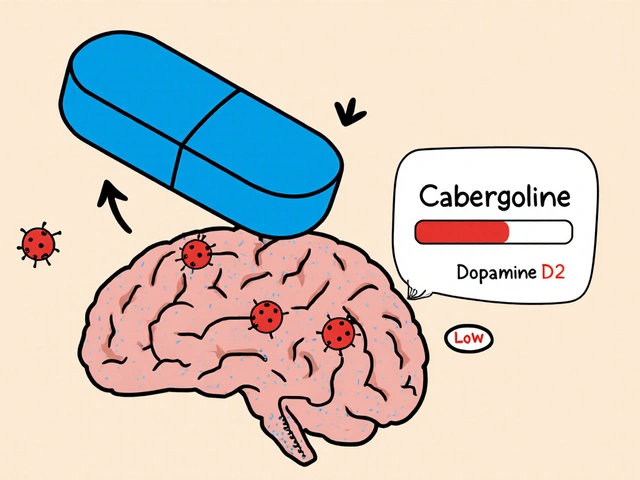Understanding Erlotinib: An Overview
Erlotinib is a drug that has been making waves in the medical field, particularly in the treatment of certain types of lung and pancreatic cancers. As a targeted therapy, it works by inhibiting the growth of cancer cells, thereby slowing the progression of the disease. It's a fascinating drug with a lot of potentials, and I've been following its development closely. In this section, we'll delve into what Erlotinib is, how it works, and its current use in cancer treatment.
How does Erlotinib work, you ask? Well, it specifically targets and blocks the epidermal growth factor receptor (EGFR), a protein that plays a critical role in cell division and growth. By curbing the action of EGFR, Erlotinib helps to impede the growth and spread of cancer cells. But, like any other drug, Erlotinib isn't without its side effects. These can range from mild symptoms like diarrhea to more serious ones like lung problems.
Exploring Novel Drug Combinations with Erlotinib
On its own, Erlotinib is quite effective. But when combined with other drugs, its efficacy can be significantly enhanced. This is an area of research that has been garnering a lot of attention recently. Scientists have been exploring various drug combinations with Erlotinib, hoping to find a cocktail that can deliver a more potent punch to cancer cells.
For instance, combining Erlotinib with drugs like bevacizumab, which inhibits blood vessel growth in tumors, has shown promise in early clinical trials. Similarly, combining Erlotinib with immunotherapy, a treatment that boosts the body's natural defenses to fight cancer, is another promising avenue that researchers are exploring. These combinations could potentially offer better treatment outcomes and improve survival rates for patients.
The Future of Erlotinib: New Indications
While Erlotinib is currently approved for use in treating certain lung and pancreatic cancers, researchers are continuously investigating its potential in other areas. There are ongoing clinical trials to evaluate Erlotinib's efficacy in treating other types of cancers, such as head and neck cancer, colorectal cancer, and ovarian cancer.
These studies are in various stages, and while it's too early to draw definitive conclusions, the preliminary results look promising. I'll be keeping a close eye on these trials, and I look forward to updating you on the latest developments.
Addressing Resistance to Erlotinib
Another crucial aspect of Erlotinib's future lies in addressing resistance. Unfortunately, some patients develop resistance to Erlotinib over time, rendering the drug less effective. This resistance can occur due to various reasons, such as mutations in the EGFR protein or the activation of alternative signaling pathways in cancer cells.
Researchers are currently studying ways to overcome this resistance, such as developing new drugs that can bypass the resistance mechanisms or combining Erlotinib with other therapies to enhance its effectiveness. The goal is to ensure that Erlotinib remains a potent weapon in our arsenal against cancer.
Considering the Cost-Effectiveness of Erlotinib
Finally, we must consider the cost-effectiveness of Erlotinib. As with any drug, the financial implications of its use are a significant consideration. Erlotinib is a relatively expensive drug, and we must weigh its benefits against its costs.
However, considering the potential benefits that Erlotinib offers, particularly when combined with other drugs, it can be argued that it provides good value for money. Furthermore, as research progresses and we find more efficient ways to use Erlotinib, its cost-effectiveness is likely to improve. The future of Erlotinib, in this regard, looks promising.






July 21, 2023 AT 21:16
Erlotinib’s cocktail potential is a kaleidoscopic promise.